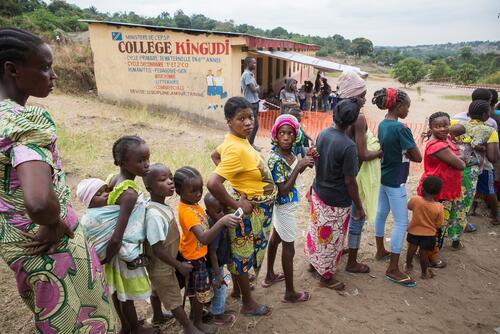Yellow fever is a mosquito-borne acute haemorrhagic viral disease without a cure. It occurs mostly in sub-Saharan Africa, where it is a major public health concern but is on the rise in Central and South America.
In 2015-2016, during the largest outbreak in 30 years, our teams vaccinated more than one million people in the Democratic Republic of Congo as part of a mass vaccination campaign.
Yellow fever virus infection can be asymptomatic or cause mild symptoms. Most people start to recover after a few days. But a small percentage of people enter a more toxic stage of the disease. After seeming to recover, they experience high fever again. Their other symptoms may include jaundice (a yellowing of the skin and eyes – hence the name yellow fever), abdominal pain and vomiting.
Some may bleed from the mouth, eyes, nose or stomach. In the most serious cases, the liver and kidneys cease to function. Around half the people who enter this stage of yellow fever die within a few days.
Low vaccination coverage
Yellow fever is transmitted through the daytime bite of infected female Aedes mosquitoes.
Large epidemics occur in regions with sub-optimal vaccination coverage, which is often a sign of a weak health system. Outbreak risk is especially high when infected people move into heavily populated areas with a high mosquito density and where the disease is common. Systematic vaccination, which can prevent and reduce yellow fever epidemics, has fallen sharply in some African countries, leading to outbreaks in Angola and the Democratic Republic of Congo in 2016.
Factors such as population movements, and increased urbanisation in poor areas without proper water and sanitation systems, have the potential to contribute to increasing incidences of yellow fever and large epidemics.
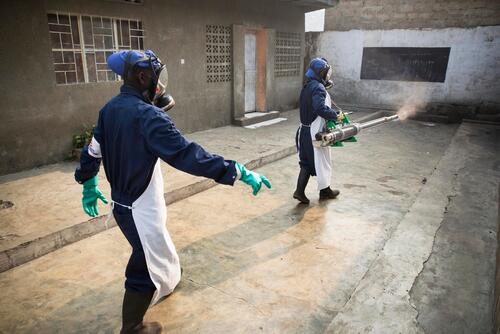
Prevention and control
Vaccination is the best way to prevent infection and stop outbreaks. A single dose of yellow fever vaccine gives life-long protection. People can also protect themselves against mosquito bites by wearing long clothing and using repellents and insecticide-treated mosquito nets if they are available. At the community level, control measures include eliminating stagnant water, where mosquitoes breed, and spraying insecticide.
MSF has responded to several yellow fever outbreaks since 2000 in the Democratic Republic of Congo (DRC), Guinea, Sudan, Sierra Leone, Central African Republic, and Chad, among other countries.
We aim to control outbreaks through mass vaccination campaigns and community-wide insecticide spraying, and to provide care for people with severe cases. We also work to improve the reach of a limited vaccine stockpile (see “supporting vaccine advancements” below).
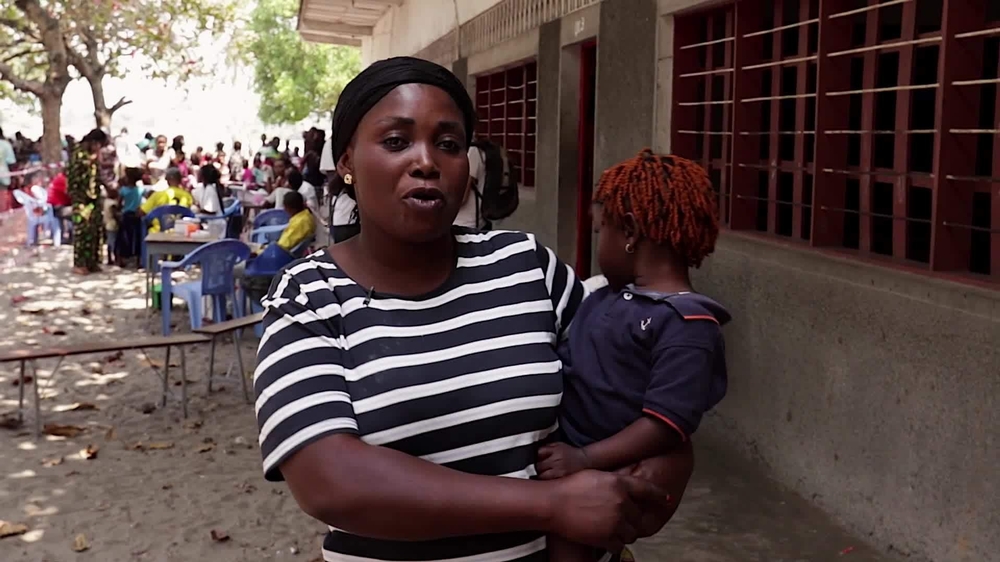
Massive emergency vaccination in the Democratic Republic of Congo
Vaccinating millions
The largest yellow fever outbreak of the past 30 years began in Angola in December 2015 and spread to neighbouring Democratic Republic of Congo. We took part in the emergency response in both countries. The combined efforts of all partners supporting the ministries of health resulted in the vaccination of more than 30 million people.
In DRC, we participated in a wide-scale vaccination campaign during which more than eight million people were immunised in less than two weeks.
MSF's response during the 2016 yellow fever outbreak in DRC:
760,000
760,
370,000
370,
4,000
4,
We mobilised 100 teams composed of 160 people from 20 countries, using a fleet of 65 vehicles. In Kinshasa, DRC’s capital, teams reached 760,000 people – 10 per cent of the target population in the city. MSF teams also vaccinated the 370,000 residents of Matadi, near the Angolan border.
Such rapid, large-scale campaigns come with many logistical challenges, notably ensuring that vaccines are kept cold. During our response in the DRC, teams needed to replenish 4,000 ice packs and coolers each day in different locations.
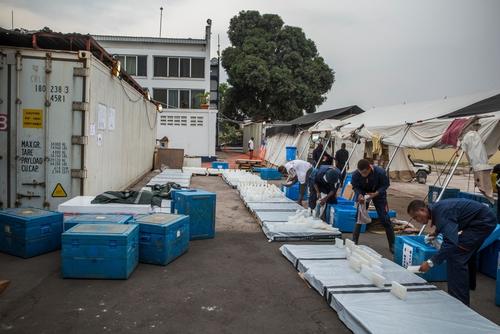
Eliminating mosquito breeding grounds
When we respond to an outbreak, our entomologists (insect specialists) locate the mosquitoes' breeding grounds.This typically involves visiting people’s homes and their surroundings to identify areas where stagnant water may collect.
Our teams spray and fumigate homes to kill adult mosquitoes and eliminate breeding sites. These activities are carried out in settings where cases have been confirmed, and in vulnerable locations such as hospitals, schools and markets.
Providing supportive care to patients: Diagnosis and treatment
Yellow fever is difficult to diagnose because many of its mild, early flu-like symptoms resemble those of many other infections.
Severe cases can be confused with severe malaria, poisoning, viral hepatitis, or certain other viral diseases. Yellowing of the eyes due to jaundice helps doctors diagnose the late-stage disease.
Definitive diagnosis requires testing blood samples at specialised laboratories and is usually only carried out if a new outbreak is suspected. Once the first cases are confirmed as yellow fever, an outbreak can be reported.
During outbreaks, our teams treat patients, providing them with care and managing symptoms. We also support national and/or local health departments by preparing selected hospitals to manage patients and by training health staff.
There is no specific antiviral drug for yellow fever. When our teams treat people in the more severe stage of the disease, medication is limited to fighting the symptoms such as fever, jaundice and haemorrhages. Hospital-based supportive care can save the lives of some patients.
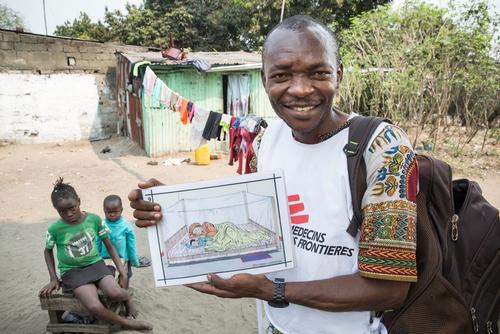
Supporting vaccine advancements
Shortages in yellow fever vaccine supply became especially acute during the major 2015-2016 outbreak. In an effort to find ways to increase the number of people who can be vaccinated during large-scale outbreaks, the World Health Organization and partners, including MSF’s epidemiological entity Epicentre, conducted a study which showed that the vaccine is effective even when a fraction (one-fifth) of the usual dose is used.
On the basis of this research, our staff administered fractional doses of the yellow fever vaccine, significantly increasing the number of at-risk people who were protected through the vaccination campaign.
The evidence used to recommend the use of fractional doses was based on a limited number of clinical studies.
Epicentre responded to WHO’s call for further research by leading clinical trials into the safety and immunogenicity (ability of a substance to provoke an immune response) of using fractional doses. The trials involved gathering data on the persistence of neutralising antibodies and the performance of the fractional dose in young children and populations in Africa, including people with HIV. In a first, the study investigated all four WHO-prequalified and approved yellow fever vaccines, all from different manufacturers.
In January 2021, the scientific journal The Lancet published results from Epicentre’s study, which showed that giving one-fifth of a dose of any of the four yellow fever vaccines was found to be effective. A smaller dose of vaccine therefore provides protection to people against the disease.
These results should enable WHO to make definitive recommendations on the use of fractional doses of yellow fever vaccines in response to large-scale campaign needs. This would be an important step for Médecins Sans Frontières (MSF) and other NGOs working with ministries of health. More people could be protected, and the spread of yellow fever could be stopped by making the best use of available vaccines.




